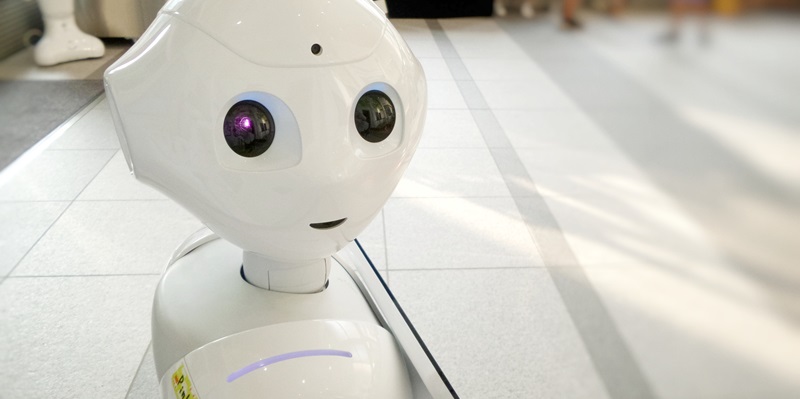The year 2024 promises to be monumental in the realm of generative AI and robotics as the cross-section of these technologies presents a world of possibilities. Among the pioneering teams leading the way is Google’s DeepMind Robotics researchers, who are actively exploring the untapped potential of this transformative space. Anchoring their efforts is the newly announced AutoRT, a groundbreaking system designed to leverage large foundational models and revolutionize the field of robotics.
DeepMind Robotics’ Involvement
Riding the wave of innovation in generative AI and robotics, DeepMind Robotics researchers have dedicated their expertise to unlocking the limitless potential of this convergence. Their diligent exploration of this space has garnered considerable attention, propelling the development of groundbreaking technologies like AutoRT. With a focus on redefining the boundaries of what robots can achieve, DeepMind Robotics researchers are paving the way for a new era of intelligent machines.
Introducing AutoRT: Revolutionizing Robotics
AutoRT, the pioneering system unveiled by DeepMind Robotics, is poised to revolutionize the field by harnessing the power of large foundational models. With its groundbreaking capabilities, AutoRT can seamlessly manage a fleet of robots operating in unison, equipped with state-of-the-art cameras to gain an extensive understanding of their surrounding environment and the objects within it. This powerful integration of generative AI and robotics opens up a multitude of possibilities for enhanced efficiency and productivity.
Capabilities of AutoRT: Orchestrating Tandem Operations
A key aspect of AutoRT’s capabilities lies in its ability to orchestrate up to 20 robots operating simultaneously with optimal coordination. By seamlessly communicating and allocating tasks, AutoRT enables a fleet of robots to work in harmony, providing a significant boost to productivity and efficiency. Moreover, with its advanced camera integration, AutoRT can create accurate layouts of the environment, allowing robots to navigate and interact with objects intelligently.
Task Suggestions and End Effectors: Leveraging Large Language Models
One of the standout features of AutoRT is its integration with large language models, enabling it to suggest a vast array of tasks that can be effectively accomplished by the hardware. This groundbreaking capability opens doors to enhanced adaptability and versatility, empowering robots to tackle complex and novel situations with ease. Additionally, AutoRT effectively utilizes its end effector to achieve precise and efficient interactions with objects, further cementing its position as a transformative system in the field of robotics.
Orchestration and Device Management: Multifaceted Control
In addition to orchestrating multiple robots, AutoRT possesses the ability to manage a staggering total of 52 different devices. This unparalleled control not only contributes to enhanced productivity but also enables the seamless integration of various robotic tools and features. By acting as a comprehensive control hub, AutoRT ensures efficient utilization of resources and facilitates seamless operation across an extensive range of tasks.
Data Collection and Trials: Empowering AutoRT’s Capabilities
DeepMind has amassed a colossal dataset consisting of over 77,000 trials and more than 6,000 tasks to augment the capabilities of AutoRT. This expansive collection of data provides valuable insights and real-world scenarios for AutoRT to learn from. By leveraging this extensive dataset, AutoRT can continuously refine its understanding of various tasks and environments, driving continuous evolution and improvement.
RT-Trajectory Training: Enhancing Accuracy and Efficiency
One of the game-changing developments in the journey towards highly accurate and efficient robotic movements is the introduction of RT-Trajectory training. This training method introduces a two-dimensional sketch overlay of the robot’s arm in action onto the video feed, providing a visual representation of the system’s movements. By combining visual cues with comprehensive training, RT-Trajectory significantly enhances the success rate, achieving a remarkable 63% compared to the previous RT-2 training’s 29% in tests involving 41 tasks.
Advancements in Knowledge Unlocking: Unleashing the Power of Existing Datasets
RT-Trajectory not only represents a significant leap forward in enhancing the abilities of robots in novel situations, but also serves as a crucial tool for unlocking the knowledge embedded in existing datasets. By leveraging the combined power of generative AI and robotics, RT-Trajectory enables robots to perform with efficient accuracy in unfamiliar environments. This breakthrough contributes to the ongoing effort of extracting valuable insights and knowledge from existing datasets, further amplifying the impact of generative AI and robotics on various industries.
As we venture into the year 2024, the convergence of generative AI and robotics is set to reshape the very fabric of our technological landscape. With DeepMind Robotics researchers at the forefront and AutoRT as a revolutionary system, we are witnessing unparalleled advancements in the field. From orchestrating fleets of robots to leveraging language models for task suggestions, AutoRT pioneers a new era of intelligent and adaptable robots. With RT-Trajectory training further enhancing accuracy and efficiency, we are on the cusp of unlocking immense knowledge from existing datasets. The transformative power of generative AI and robotics is poised to reshape industries and revolutionize the way we live and work in the years to come.

